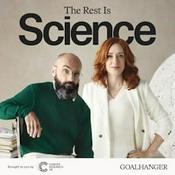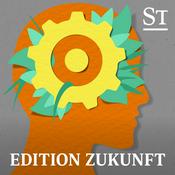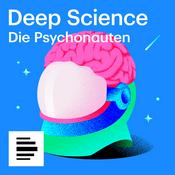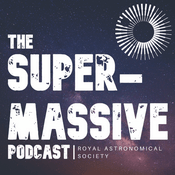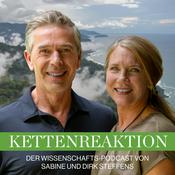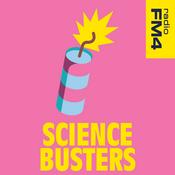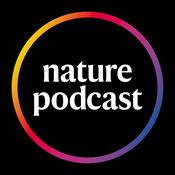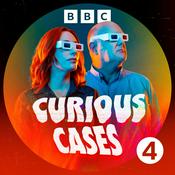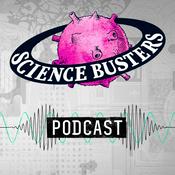1201 Episoden

How Did Vaccine Policies Actually Change In 2025?
22.12.2025 | 12 Min.
Since 1955, when Congress passed the Polio Vaccination Assistance Act, the federal government has been in the business of expanding access to vaccines. That is, until this year.2025 has been filled with almost daily news stories about federal agencies, under the direction of Health Secretary Robert F. Kennedy Jr., casting doubts about vaccine safety, including unsubstantiated claims about links to autism. These agencies have also been taking steps that could roll back access to vaccines, including for hepatitis B and COVID-19.But we’ve found it very hard to sort out what these talking points and recommendations mean in practice. KFF Health News journalists Jackie Fortiér and Arthur Allen join Host Flora Lichtman to discuss, one year in, what this administration’s stance on vaccines has meant practically—for vaccine access, and vaccine uptake.Guests: Arthur Allen is senior correspondent at KFF Health News and author of Vaccine: The Controversial Story of Medicine's Greatest Lifesaver.Jackie Fortiér is a Peggy Girshman fellow covering health policy at KFF Health News.Transcripts for each episode are available within 1-3 days at sciencefriday.com. Subscribe to this podcast. Plus, to stay updated on all things science, sign up for Science Friday's newsletters.

Why Astronomers Are Excited About Comet 3I/ATLAS’ Close Approach
19.12.2025 | 18 Min.
This year, comet 3I/Atlas broke into our solar system, but also the zeitgeist. This dirty snowball is a visitor from another solar system, and it’s only the third interstellar object we’ve ever spotted. And today, it's closer to us than ever before—just 170 million miles away.Astronomy experts Stefanie Milam and Hakeem Oluseyi join Host Flora Lichtman to dish about 3I/ATLAS and how it captured the spotlight in a way that maybe no other big hunk of rock ever has.Plus, the sun is setting on the ISS, and the plan is to eventually crash it into the ocean. But wouldn’t it be cooler to send it into deep space instead? A listener pleads his case.Guests: Dr. Stefanie Milam is an astrochemist at NASA and a project scientist for the James Webb Space Telescope. She studies comets and interstellar objects.Dr. Hakeem Oluseyi is an astrophysicist and CEO of the Astronomical Society of the Pacific.Transcripts for each episode are available within 1-3 days at sciencefriday.com. Subscribe to this podcast. Plus, to stay updated on all things science, sign up for Science Friday's newsletters.

‘Fire Amoeba’ Likes It Hot, And A Faraway Lava Planet
18.12.2025 | 18 Min.
While on a sampling trip in California’s Lassen Volcanic National Park, researchers stopped to sample a rather boring stream on their hike to Boiling Springs Lake. But when they incubated that water sample back in the lab, they discovered an amoeba that could still move and divide at 145 F, a new record for a eukaryotic cell. Microbiologist Angela Oliverio joins Host Flora Lichtman to describe the “fire amoeba,” Incendiamoeba cascadensis.Plus, planetary scientist Johanna Teske takes us to exoplanet TOI-561b, a far-off “wet lava ball” which was recently observed by the James Webb Space Telescope. Researchers believe that the planet has the strongest evidence yet of an atmosphere on a rocky planet outside our solar system.Guests:Dr. Angela Oliverio is an assistant professor in the department of biology at Syracuse University. Dr. Johanna Teske is a staff scientist at Carnegie Science Earth and Planets Laboratory in Washington, D.C.Transcripts for each episode are available within 1-3 days at sciencefriday.com. Subscribe to this podcast. Plus, to stay updated on all things science, sign up for Science Friday's newsletters.

What’s The Reality Behind The Humanoid Robot Hype?
17.12.2025 | 12 Min.
Videos of humanoid robots dancing, doing cartwheels, putting clothes in a washing machine, and serving drinks are all over social media. And tech CEOs are telling us to prepare for the forthcoming humanoid army that’s going to totally change our lives for the better.But what’s real? Where are we with this technology? Are these humanoids robots ready to take washing the dishes off our plates, or work beside us in warehouses?Tech journalist James Vincent became an expert on the subject when he toured humanoid robot factories and rubbed shoulders with robots themselves for a feature story he wrote for Harper’s Magazine. He joins Host Flora Lichtman with perspective on the hype.Guest: James Vincent is a journalist who’s written for The Verge and The Guardian, and author of the book Beyond Measure: The Hidden History of Measurement. Transcripts for each episode are available within 1-3 days at sciencefriday.com. Subscribe to this podcast. Plus, to stay updated on all things science, sign up for Science Friday's newsletters.

'Just' A Blue Jay? Don't Overlook These Magnificent Common Birds
16.12.2025 | 17 Min.
It’s that time of year: the Christmas Bird Count, when birders go out in flocks to record all the birds they see in a single day. The data collected during this annual tradition gets compiled by the National Audubon Society, and helps scientists understand bird population trends across the Americas. If you participate in the bird count, chances are you’ll see a lot of the same birds you’d see any other day of the year—think sparrows, blue jays, blackbirds, cardinals. But that doesn’t make them any less special. So this year we’re turning our binoculars on a few (wrongfully) overlooked common birds. Producer Kathleen Davis talks with two of our favorite birders, author and illustrator Rosemary Mosco, and conservation scientist Corina Newsome, to share some surprising facts about birds that don’t often make it to the top of pecking order.Guests:Rosemary Mosco is an author, illustrator, and speaker whose work connects people with the natural world.Corina Newsome is a birder and conservation scientist at the National Wildlife Federation, based in Atlanta, Georgia.Transcripts for each episode are available within 1-3 days at sciencefriday.com. Subscribe to this podcast. Plus, to stay updated on all things science, sign up for Science Friday's newsletters.
Weitere Wissenschaft Podcasts
Trending Wissenschaft Podcasts
Über Science Friday
Höre Science Friday, Sternengeschichten und viele andere Podcasts aus aller Welt mit der radio.at-App

Hol dir die kostenlose radio.at App
- Sender und Podcasts favorisieren
- Streamen via Wifi oder Bluetooth
- Unterstützt Carplay & Android Auto
- viele weitere App Funktionen
Hol dir die kostenlose radio.at App
- Sender und Podcasts favorisieren
- Streamen via Wifi oder Bluetooth
- Unterstützt Carplay & Android Auto
- viele weitere App Funktionen


Science Friday
App laden,
loshören.

